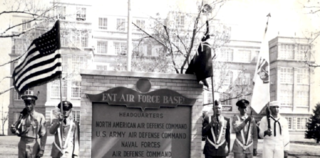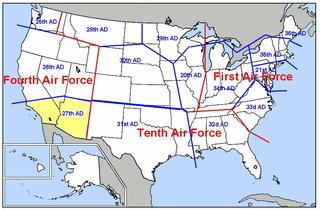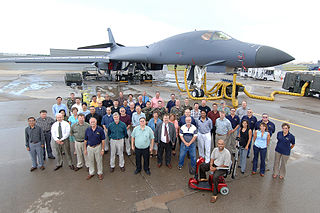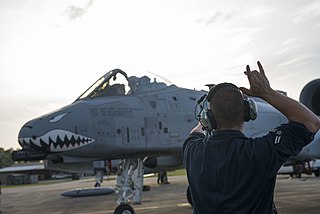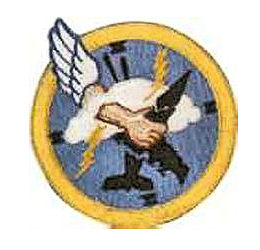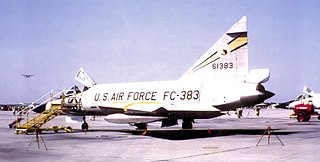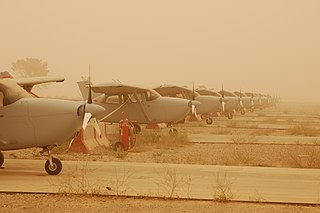| 32d Air Division | |
|---|---|
| Active | 1949–1958; 1958-1963; 1966-1969 |
| Country | United States |
| Branch | United States Air Force |
| Role | Command and Control |
| Part of | Air Defense Command |
| Insignia | |
| 32d Air Division emblem (approved 4 March 1953) [1] |  |
The 32d Air Division (32d AD) is an inactive United States Air Force organization. It was last active with Air Defense Command, assigned to First Air Force at Gunter Air Force Base, Alabama, where it was inactivated on 31 December 1969.

The United States Air Force (USAF) is the aerial and space warfare service branch of the United States Armed Forces. It is one of the five branches of the United States Armed Forces, and one of the seven American uniformed services. Initially formed as a part of the United States Army on 1 August 1907, the USAF was established as a separate branch of the U.S. Armed Forces on 18 September 1947 with the passing of the National Security Act of 1947. It is the youngest branch of the U.S. Armed Forces, and the fourth in order of precedence. The USAF is the largest and most technologically advanced air force in the world. The Air Force articulates its core missions as air and space superiority, global integrated intelligence, surveillance, and reconnaissance, rapid global mobility, global strike, and command and control.
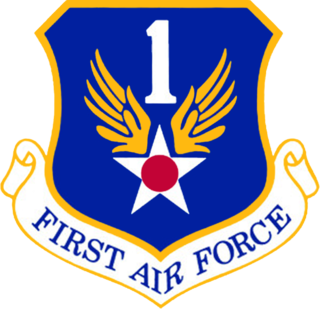
The First Air Force is a numbered air force of the United States Air Force Air Combat Command (ACC). It is headquartered at Tyndall Air Force Base, Florida. Its primary mission is the air defense of the Contiguous United States (CONUS), United States Virgin Islands and Puerto Rico.
Contents
- History
- Air Defense of the Northeast
- Cuban Missile Crisis
- Air defense of the Southeast
- Lineage
- Assignments
- Stations
- Components
- See also
- References
- Notes
- Bibliography
The division was first activated by Continental Air Command in November 1949 at Stewart Air Force Base, New York. It controlled air defense units in the northeastern United States from Stewart, and later from Hancock Field, New York until being inactivated in August 1958.

Continental Air Command (ConAC) (1948–1968) was a Major Command of the United States Air Force (USAF) responsible primarily for administering the Air National Guard and Air Force Reserve.
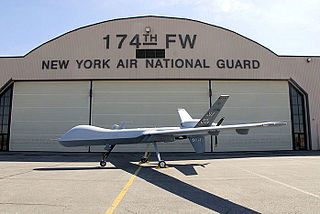
Hancock Field Air National Guard Base is a United States Air Force base, co-located with Syracuse Hancock International Airport. It is located 4.6 miles (7.4 km) north-northeast of Syracuse, New York, at 6001 East Molloy Road, Mattydale, NY 13211. The installation consists of approximately 350 acres (1.4 km2) of flight line, aircraft ramp and support facilities on the south side of the airport.
The division was activated again in November 1958 at Dobbins Air Force Base, Georgia to provide air defense of the southeastern United States, moving to Oklahoma City Air Force Station, Oklahoma in 1961. During the Cuban Missile Crisis, it was the primary air defense command for potential attacks from Cuba, acting through its Montgomery Air Defense Sector and a provisional organization at Key West Naval Air Station. The division was inactivated in September 1963.
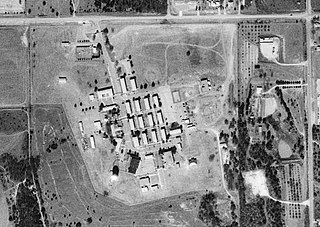
Oklahoma City Air Force Station is a closed Cold War United States Air Force air defense and communications-electronics headquarters and radar station. It was located 10 miles (16 km) east-southeast of Oklahoma City, Oklahoma, just to the southeast of Tinker Air Force Base. It ceased to be a separate Air Force installation on 1 October 1983, when it merged with Tinker.

The Cuban Missile Crisis, also known as the October Crisis of 1962, the Caribbean Crisis, or the Missile Scare, was a 13-day confrontation between the United States and the Soviet Union initiated by American ballistic missile deployment in Italy and Turkey with consequent Soviet ballistic missile deployment in Cuba. The confrontation is often considered the closest the Cold War came to escalating into a full-scale nuclear war.
In April 1966, the 32d was again activated at Gunter, where it replaced the Montgomery Air Defense Sector. At Gunter, it also reported to North American Air Defense Command (NORAD) as the 32d NORAD Region. It was again responsible for air defense in the Southeast until 1969, when its mission, personnel and equipment were transferred to the 20th Air Division.
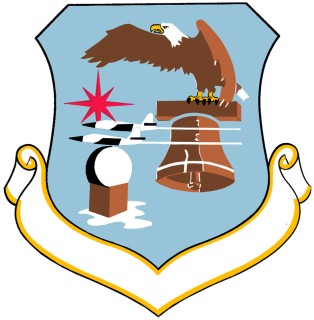
The 20th Air Division is an inactive United States Air Force organization. Its last assignment was with Tactical Air Command at Tyndall Air Force Base, Florida where it was inactivated on 1 March 1983.



